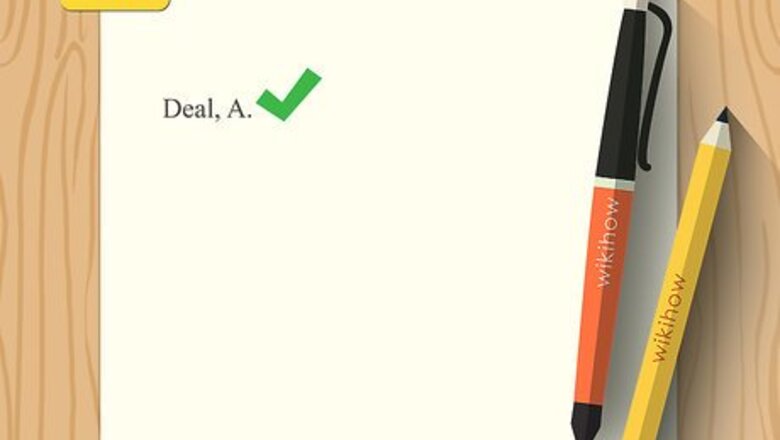
views
APA
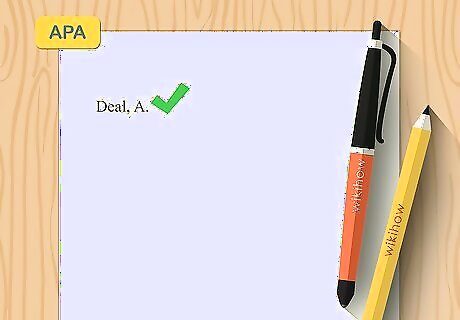
Begin your reference list entry with the name of the author. If the paper credits an individual author, type their last name and first initial. Place a comma between the name and initial. If no individual author is credited, list the institution that produced the paper as the author. Place a period after the name of an institutional author. Example: Deal, A.
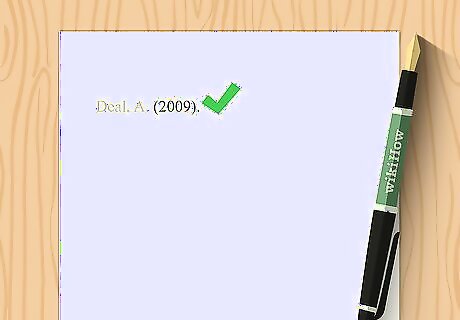
Provide the year of publication in parentheses. After the name of the author, type the year the paper was published or released. Place a period after the year of publication, outside the closing parentheses. Example: Deal, A. (2009).
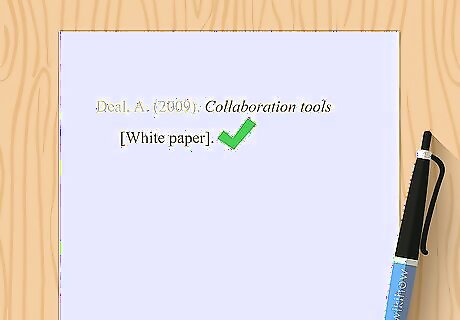
Include the title of the white paper with a description. Type the title in italics. Use sentence case, capitalizing only the first word and any proper nouns. After the title, use the words "White paper" in square brackets to describe the document. Place a period after the closing brackets. Do not italicize the bracketed information. Example: Deal, A. (2009). Collaboration tools [White paper].
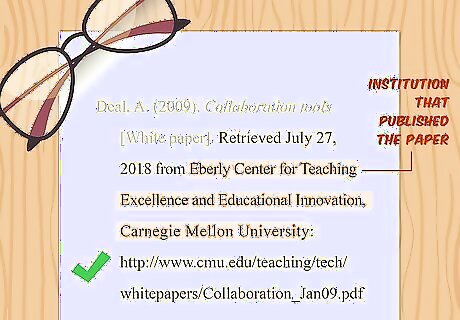
Close with the direct URL and date of access. Type the word "Retrieved" followed by the date you accessed the URL, in month-day-year format. Then type the word "from" and identify the institution that published the paper. Type a colon, then provide the direct URL for the paper. Do not place a period at the end of the URL. Example: Deal, A. (2009). Collaboration tools [White paper]. Retrieved July 27, 2018 from Eberly Center for Teaching Excellence and Educational Innovation, Carnegie Mellon University: http://www.cmu.edu/teaching/technology/whitepapers/CollaborationTools_Jan09.pdf
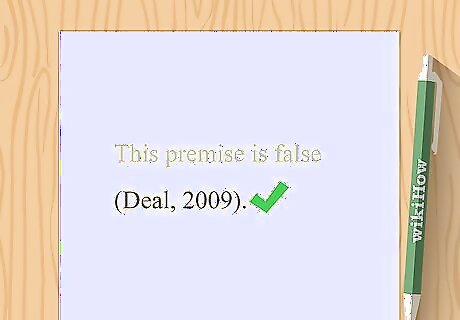
Use the author's name and year of publication for in-text citations. APA style calls for author-date parenthetical citations when you quote or paraphrase a source in the body of your paper. Separate the author and year with a comma. If the parenthetical occurs at the end of the sentence, place the period outside the closing parentheses. Example: (Deal, 2009). If you mention the author's name in the text, put the year in parentheses immediately after the author's name.
MLA
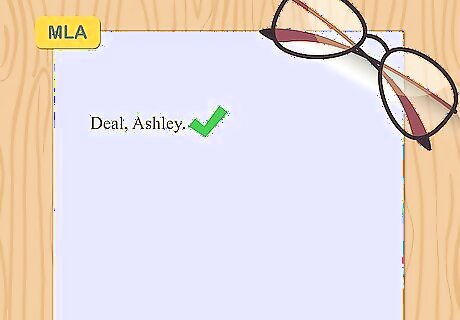
Start your Works Cited entry with the name of the author. If the white paper credits an individual author, type their last name, followed by a comma, then their first name. If no individual author is credited, use the name of the government agency, corporation, or organization that produced the paper as the author. Place a period after the author's name. Example: Deal, Ashley. If the institutional author is also the publisher, skip the author's name and list the title first.
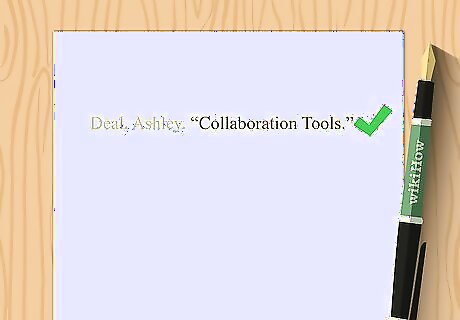
List the title of the white paper. Type the full title of the white paper in quotation marks. Use title case, capitalizing all nouns, pronouns, verbs, and adverbs in the title. Place a period at the end of the title, inside the closing quotation marks. Example: Deal, Ashley. "Collaboration Tools."

Provide the title of the series or collection. Many white papers are released as part of a series or collection of papers on a broad subject area. If a series is identified, type the title of that series or collection in italics. Place a period at the end. Example: Deal, Ashley. "Collaboration Tools." Teaching with Technology White Paper.
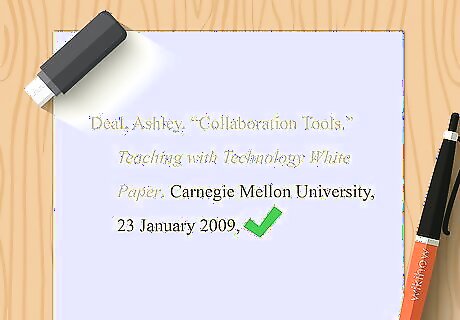
Include the name of the publisher and date of publication. The publisher typically will be a government agency, corporation, university, or research organization. Type the publisher's name, followed by a comma. Then type the date of publication in day-month-year format. If you have a URL for the paper, place a comma after the date. Otherwise, use a period. Example: Deal, Ashley. "Collaboration Tools." Teaching with Technology White Paper. Carnegie Mellon University, 23 January 2009,
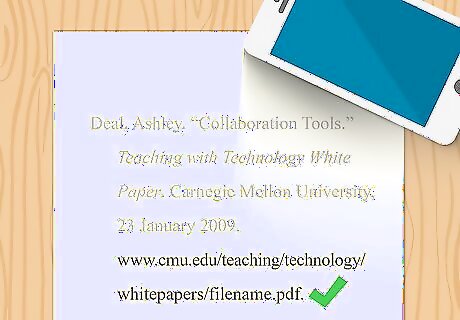
Add the direct URL for the paper, if available. Typically, you'll access a white paper online. Provide the direct URL (or "permalink") for the paper, without the "http://" portion of the address. Place a period at the end of the URL. Example: Deal, Ashley. "Collaboration Tools." Teaching with Technology White Paper. Carnegie Mellon University, 23 January 2009, www.cmu.edu/teaching/technology/whitepapers/CollaborationTools_Jan09.pdf.
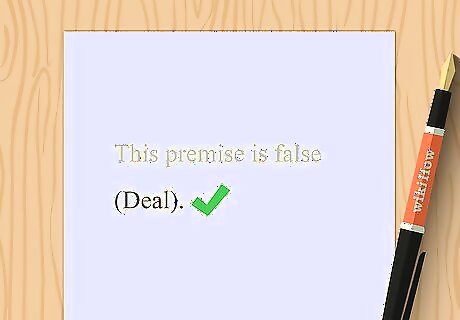
Use the first element of your Works Cited entry for in-text citations. When you quote or paraphrase the white paper, MLA requires a parenthetical citation at the end of the sentence. This citation directs your readers to the full entry in your Works Cited. Use the author's name, or the title of the paper for institutional authors. Place a period outside the closing parentheses. Example: (Deal).
Chicago
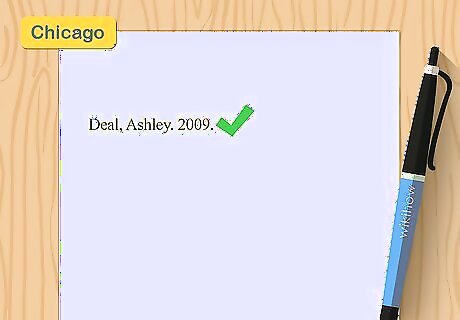
List the author's name and the year the paper was released. If the white paper credits an individual author, type their last name first, then a comma, then their first name. If no individual author is credited, use the name of the institution that published the paper as the author. Place a period after the author's name. Add the year the paper was released or published, followed by a period. Example: Deal, Ashley. 2009.
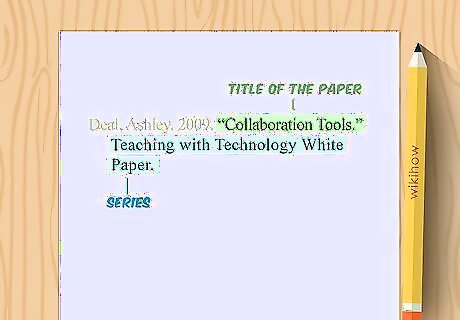
Include the title of the paper and the series. After the year, type the title of the paper in quotation marks. Use title case, and place a period at the end of the title, inside the closing quotation marks. If the paper is part of a larger series or collection of papers, type that title after the title of the paper. Place a period at the end. Example: Deal, Ashley. 2009. "Collaboration Tools." Teaching with Technology White Paper.
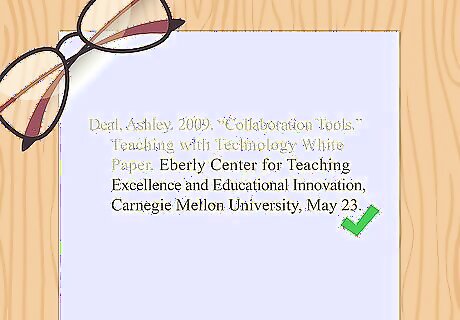
Provide the name of the sponsoring organization and date of publication. The sponsoring organization is the government agency, university, think tank, or corporation that commissioned or released the white paper. Place a comma after the name, then the day and month of publication, followed by a period. If a specific date is not provided, place a period after the name of the sponsoring organization. Example: Deal, Ashley. 2009. "Collaboration Tools." Teaching with Technology White Paper.Eberly Center for Teaching Excellence and Educational Innovation, Carnegie Mellon University, January 23.
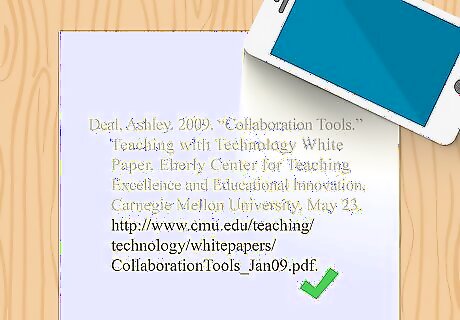
Add the direct URL for the white paper. If you accessed the white paper online, include a direct URL for the paper in your citation so your readers can access the same source. Place a period after the URL. Example: Deal, Ashley. 2009. "Collaboration Tools." Teaching with Technology White Paper. Eberly Center for Teaching Excellence and Educational Innovation, Carnegie Mellon University, January 23. http://www.cmu.edu/teaching/technology/whitepapers/CollaborationTools_Jan09.pdf.
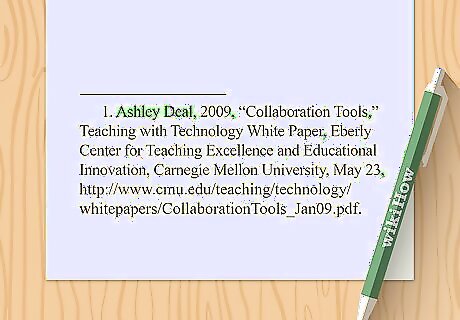
Change the punctuation for footnotes. Chicago style calls for a footnote to cite your source in the body of your paper whenever you quote or paraphrase it. Footnotes follow the same format as the bibliography entry, except that elements are separated by commas rather than periods. Individual author's names are listed in first name-last name format. The only period in a Chicago-style footnote is at the very end. Example: Ashley Deal, 2009, "Collaboration Tools," Teaching with Technology White Paper, Eberly Center for Teaching Excellence and Educational Innovation, Carnegie Mellon University, January 23, http://www.cmu.edu/teaching/technology/whitepapers/CollaborationTools_Jan09.pdf.



















Comments
0 comment